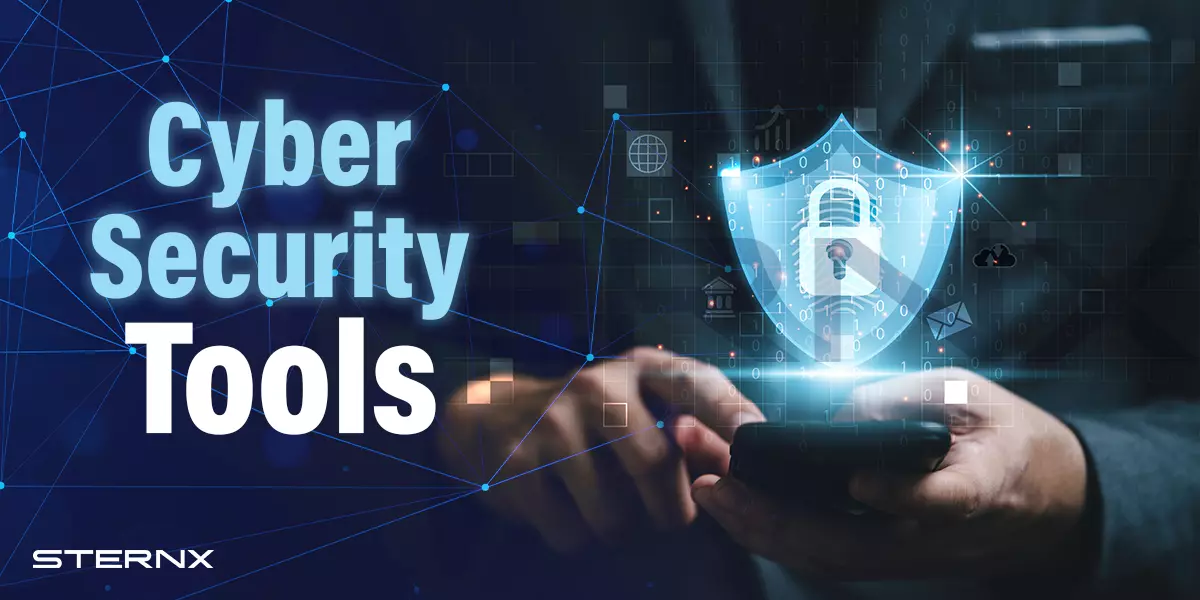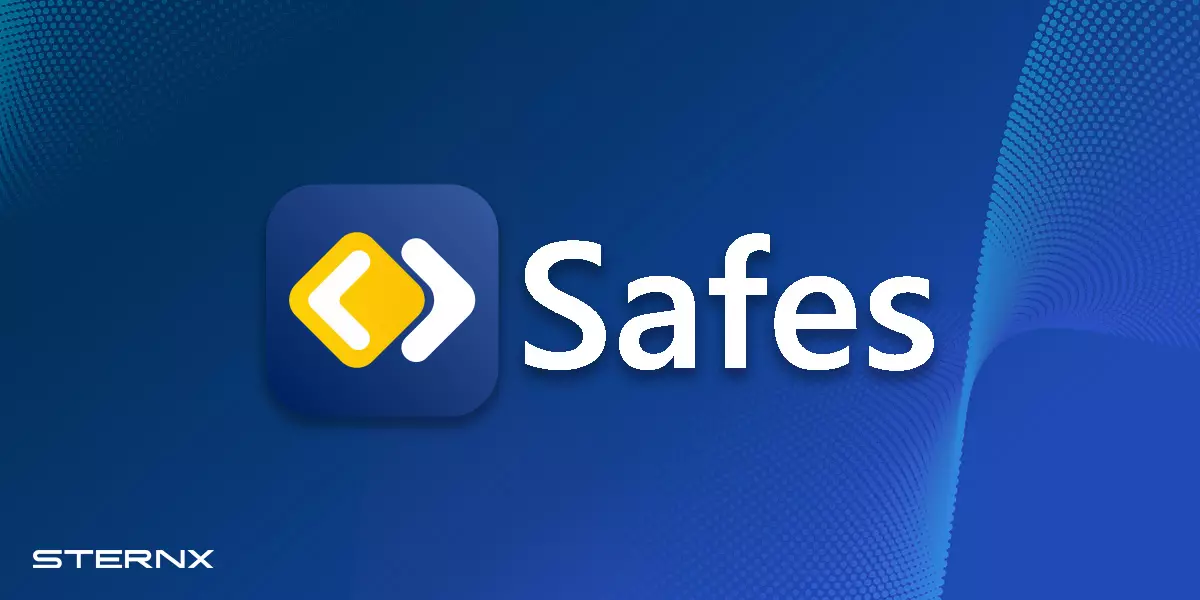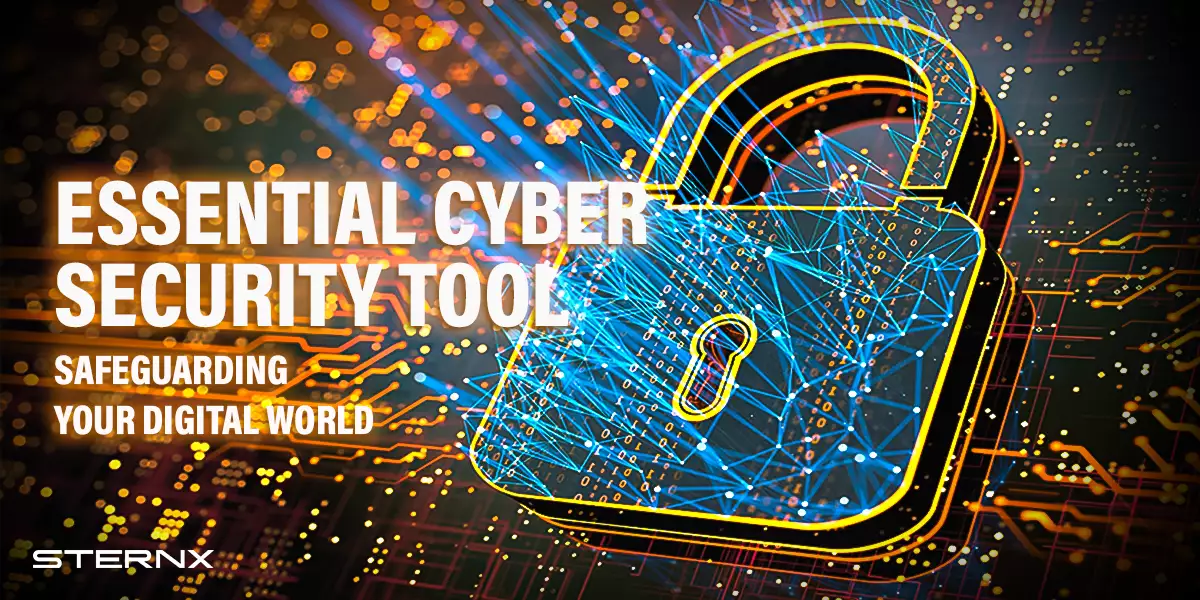Table of Contents
Cybersecurity has become more important than ever in today’s increasingly digital world. As our reliance on technology grows, so do the risks of cyber threats that can disrupt businesses, compromise data, and endanger individuals. Developing robust cybersecurity measures is no longer an option – it’s a necessity for anyone who values their privacy and security online. In this blog, we’ll explore some of the most common cybersecurity challenges faced today and discuss essential tools and best practices that can help guard against them.
The threat landscape is continuously evolving. Gone are the days when cyber attacks were launched mostly by lone hackers looking to gain clout. Today, cybercrimes are often orchestrated by sophisticated criminal organizations and state-sponsored groups. The targets have expanded as well. Cybercriminals today don’t just go after big corporations and government agencies but also small businesses, healthcare facilities, educational institutions and everyday internet users.
According to a report by Cybersecurity Ventures, Forbes, global cybercrime costs are projected to grow by 15% per year over the next five years, reaching a staggering $10.5 trillion USD annually by 2025. This dramatic increase is fueled by the growing frequency and impact of attacks like ransomware, phishing, and social engineering scams.
Understanding Common Cybersecurity Threats
Cyber threats are becoming more advanced with time. Attackers today use AI and machine learning to create more personalized and harder-to-detect scams. For instance, phishing emails can be tailored to the target’s interests and written in very convincing language that lures them to click on malicious links. Emerging attack vectors like cryptojacking are also on the rise, where cybercriminals use victims’ computing power to mine cryptocurrency without their consent.
The costs of cyberattacks are rising too. The average cost of a data breach has grown from $3.54 million in 2006 to over $9 million in 2022. The uptrend is likely to continue with the increasing complexity of cyberattacks.
Common Types of Attacks
Ransomware has become one of the most lucrative cybercrime today. It involves malware that encrypts an organization’s files until a ransom is paid. There was a 105% annual increase in ransomware attacks. They can cause severe disruptions, as evidenced by the Colonial Pipeline ransomware attack that crippled fuel supplies along the U.S. East Coast.
Phishing is a type of social engineering where attackers send fraudulent messages posing as trustworthy entities to trick users into revealing sensitive information. 91% of cyber-attacks start with a phishing email. These emails often install malware, gain login credentials, or collect financial information for identity theft.
Business Email Compromise (BEC) scams are a form of phishing targeting businesses by compromising legitimate email accounts or spoofing executive identities. The FBI reveals that BEC scams have caused over $43 billion in losses since 2016.
The Need for Proactive Security
With threats growing in frequency and sophistication, merely reacting to individual security incidents is no longer prudent. Organizations need a proactive cybersecurity solution approach that anticipates digital security risk and implements strong preventive safeguards.
Some hallmarks of a cyber-aware organization include:
- Conducting regular risk assessments to identify and address vulnerabilities
- Establishing comprehensive incident response plans
- Training employees on security best practices
- Deploying defense-in-depth tools for threat prevention, detection, and response
Neglecting cybersecurity can have dire consequences – from permanent loss of critical data, to reputational damage, financial costs, lawsuits, and disrupted operations.

Essential Cybersecurity Tools and Best Practices
Now let’s discuss some key tools and practices that all individuals and businesses should consider adopting for robust 360-degree protection:
Endpoint Security
Securing endpoints like laptops, desktops, and mobile devices should be a priority since endpoints are a leading attack vector. Endpoint security protection platforms use advanced threat detection and response capabilities like AI/ML, behavioral monitoring, file integrity checking, and more. Top solutions like CrowdStrike, SentinelOne, and Microsoft Defender for Endpoint security provide complete prevention and visibility across endpoints.
Email Security
Email gateways should be secured with tools that filter malicious emails and attachments. Solutions like Proofpoint and Mimecast use features like machine learning, URL analysis, impersonation detection, and sandboxing to protect against phishing, BEC attacks, malware, spam, and more. Enable multi-factor authentication on email accounts for added security.
Network & Perimeter Security
Firewall, IPS/IDS solutions monitor inbound and outbound network traffic to identify and block suspicious activities. Web application firewalls like Imperva and Signal Sciences offer robust protection against OWASP top 10 threats. Regularly patch and update any internet-facing systems and infrastructure.
Data Encryption
Encrypting sensitive business and customer data, whether at-rest or in-transit, is critical to prevent breaches. Use encryption tools like BitLocker for devices, and enable secure connections like SSL/TLS for websites and servers.
Backup & Disaster Recovery
Maintain regular backups of critical data and test disaster recovery and ransomware plans periodically. This aids quick recovery after a ransomware attack. Use the 3-2-1 backup rule – 3 copies, 2 different media, 1 copy offsite.
Security Awareness Training
Many breaches result from human errors like clicking on phishing links or sharing passwords. Regular interactive security awareness training makes employees a strong last line of defense.
Incident Response Preparedness
Have a detailed incident response plan listing steps like containment, eradication, recovery, and disaster communication. Conduct IR drills periodically. Retain log data for forensic investigations post-incident.
Regular Risk Assessments
Assess risks across people, processes, data, and technology. Identify vulnerabilities and action steps via audits, penetration testing, and threat modeling.
By adopting a layered security approach using the right mix of modern tools and best practices, individuals and organizations can drastically minimize their attack surface and enable robust threat protection. Cybersecurity demands constant vigilance, but the peace of mind and risk mitigation provided by strong defenses make the effort well worthwhile.
Essential Cybersecurity Tools
When it comes to cybersecurity, having the right tools is essential. Here are some of the most important ones to consider from SternX Technology:

SternX Technology Parental Control App
SternX Technology is a renowned developer of parental control and digital safety solutions. Their flagship product is the SternX parental control app that empowers parents to protect their children in the digital world.
The SternX app provides robust cybersecurity features tailored to safeguard children from online risks like inappropriate content, cyberbullying, predatory contacts, overuse of devices, and more.
Some key cybersecurity capabilities of the SternX parental control app include:
- Content Filtering: SternX allows blocking inappropriate websites and apps by category, age rating, keywords etc. Parents can customize filters as per their child’s age.
- Screen Time Management: Parents can set daily or weekly limits on app and device usage. The app provides insights into how children spend time on devices.
- Location Tracking: SternX enables parents to view children’s real-time location for safety. Geofences can be created to trigger alerts when children enter or leave specified areas.
- Alerts for Suspicious Apps: Parents are notified if children download apps that are potentially inappropriate or dangerous. This allows promptly addressing risks.
- Block Cyberbullying & Predators: SternX parental monitoring software can identify and filter abusive messages and block suspicious profiles on social media to protect children from online harassment and grooming.
- AI-powered Monitoring: SternX uses AI to analyze messages, images, videos etc. on children’s devices to detect signs of cyberbullying, depression, violence, adult content and more.
With its multilayered approach to digital safety, the SternX parental control app provides robust cybersecurity protection tailored to safeguard children in today’s hyperconnected world.
Benefits of the SternX Parental Control App
The SternX parental control app provides robust protection against a wide range of cybersecurity risks faced by children today.
According to a 2020 survey, over 70% of teens have been exposed to disturbing or dangerous content online. The SternX app mitigates this threat through powerful content filtering that blocks access to inappropriate websites, apps, images and videos. Parents can customize category-based filters by age or add custom sites to blocklists.
Real-time activity monitoring further enhances protection. SternX provides detailed reports and alerts on children’s online activities, detecting signs of cyberbullying, violence, adult content and more through AI-powered analysis. This enables parents to promptly intervene when necessary.
Key Features and Functionalities
Content Filtering and Blocking: SternX allows blocking content by category, rating, keywords and custom blocklists. Categories that can be restricted include violence, explicit content, illegal drugs, hate speech, nudity and more. The app automatically updates its database of millions of inappropriate sites.
Activity Monitoring and Reporting: Parents receive weekly and monthly activity reports highlighting websites and apps accessed by children. The app sends real-time alerts about suspicious activities like cyberbullying, adult content access or chatting with strangers.
Time Management and App Control: SternX enables setting daily or weekly limits on device and app usage. Specific apps can also be blocked fully or during set times. This helps prevent overuse and addiction.
With its multilayered protection tailored to safeguard children in the digital world, SternX is undoubtedly an essential cybersecurity tool for concerned parents in today’s age.
SternX Technology IT Management Solution
SternX Technology offers a robust IT management solution that empowers organizations to enhance their cybersecurity posture. The solution provides centralized visibility and control across an organization’s network, endpoints, servers, and other IT infrastructure. It plays a key role in strengthening cyber defenses by enabling continuous monitoring, rapid threat detection, vulnerability management, and policy enforcement. With SternX, security teams can take a proactive approach to safeguarding critical systems and data.
Enhancing Cybersecurity
Effective cybersecurity today requires real-time network monitoring to detect potential threats and prompt incident response. SternX provides intelligent monitoring capabilities that analyze network traffic patterns and events to identify anomalous activities indicative of a breach or attack. The solution also performs asset discovery and vulnerability scanning to proactively find weak points before attackers exploit them. When threats are detected, the SternX console generates alerts allowing security teams to quickly investigate issues and initiate remediation. It automates containment and mitigation steps like isolating compromised endpoints. These capabilities enable a swift and coordinated response to cyber incidents.
Key Features and Benefits IT Management Solution
- Network Monitoring & Alerts: SternX continuously monitors network traffic across endpoints, servers, emails, web traffic etc. Leveraging threat intelligence and behavioral analysis, it generates real-time alerts for suspicious activities and policy violations.
- Vulnerability Management: Regular network scans quickly identify vulnerabilities and unpatched systems. Dashboard reports provide visibility into the organization’s attack surface to prioritize patching.
- Centralized Policy Enforcement: Security policies related to firewall settings, endpoint controls, web filtering, and more can be enforced consistently across the network through the centralized console.
With its multilayered approach to network visibility, threat prevention, detection and response, SternX Technology IT management solution enables robust, proactive security and is a key force multiplier for enterprise cyber defenses.
Other Key Essential Cybersecurity Tools and Practices
Secure Password Managers
Using weak or reused passwords significantly heightens vulnerability to credential stuffing, phishing, and password spraying attacks. A password manager generates strong, random passwords for each account and stores them encrypted. Leading options like LastPass, 1Password, and Dashlane also auto-fill passwords across devices. Additional security features include two-factor authentication, biometric login, and zero-knowledge encryption. LastPass provides a user-friendly interface and options for personal, team, or enterprise use. 1Password Business focuses on security with features like secrets detection and anomalous login alerts. Dashlane caters to both individuals and businesses with password sharing and inheritance capabilities.

Two-Factor Authentication (2FA)
Two-factor authentication (2FA) provides an extra layer of protection beyond passwords by requiring users to verify their identity via a second factor like SMS codes, TOTP apps, FIDO keys, biometrics etc. Popular 2FA methods include SMS-based one-time passwords, authenticator apps like Authy and Google Authenticator, and biometric authentication using fingerprints or facial recognition. 2FA should be enabled on all critical accounts like email, banking, and social media.
Employee Training and Awareness
Employees are often the weakest security link due to vulnerable behaviors like clicking on phishing links or using weak passwords. Ongoing training is crucial to reinforce secure practices and create a human firewall. Effective security awareness programs use engaging formats like videos, quizzes and posters. Real-world threat simulations via mock phishing campaigns boost readiness. As per SANS, trained employees are seven times less likely to fall victim to phishing. Training should cover malware prevention, strong passwords, social engineering red flags, safe web use and handling sensitive data. Encourage a cyber-aware culture where employees are vigilant and proactively report risks.
The Need for Layered Security
With the complexity of modern cyber threats, relying on any single security tool or control is insufficient. As per a Forbes report, 70% of breaches occurred despite the affected organizations having endpoint protection installed. This highlights the need for a layered approach known as defense in depth.
Key benefits of combining multiple, overlapping security tools include:
- Holistic protection – Complementary controls mitigate blind spots and risks that may be missed by any single control.
- Enhanced threat detection – Integrated tools provide greater visibility across networks and endpoints to identify anomalies.
- Quicker incident response – The integration of monitoring, analytics, and automation enables faster containment of detected threats.
- Improved resilience – Even if one security layer is bypassed, additional controls still provide protection and time to respond.
Implementing Layered Security with Essential Cybersecurity Tools
An effective cybersecurity strategy requires deploying controls across the IT environment at different levels:
- Network perimeter – Firewalls, intrusion prevention, proxy filters and DDoS mitigation at network boundaries.
- Endpoints – Antivirus, encryption, sandboxing, host-based firewalls on devices.
- Data – Regular backups, access controls and encryption, especially for sensitive data.
- Identity and access – Multifactor authentication and centralized access management.
- Applications – Code security, DevSecOps, web application firewalls.
- Monitoring and response – 24/7 SIEM monitoring, endpoint detection and response tools.
Conclusion
Additional critical layers include employee training, incident response plans, and compliance audits. The specific security tools implemented should be regularly updated with the latest threat intelligence. Ongoing monitoring and testing is vital to assess effectiveness. For utmost business resilience, organizations must take a proactive security approach focused on risk reduction rather than only reactive incident response.
As digital transformation accelerates across every industry, cybersecurity has become pivotal to protect our increasingly connected world against continuously evolving threats. Sophisticated cyberattacks can result in devastating data breaches, privacy violations, intellectual property theft, and huge financial losses if security is not prioritized.
This article explored some of the most crucial cybersecurity tools and best practices that individuals and organizations should embrace for robust protection in today’s threat landscape. Reliable endpoint security solutions provide the foundation by safeguarding devices like laptops and servers through advanced techniques like behavioral analysis, machine learning, and threat intelligence integration. Leading options such as Trio give unparalleled prevention and visibility across endpoints.
For core infrastructure security, IT management platforms like SternX allow centralized monitoring, control and policy enforcement across networks. Features like network traffic analysis, asset discovery and vulnerability scanning enable continuous risk identification and response. Email gateways need to be fortified with security platforms that filter out spam, phishing attacks, malware and other threats before they reach end-users. Solutions like Proofpoint and Mimecast utilize sophisticated detection methods like sandboxing and machine learning to analyze threats.
Powerful web security solutions such as Imperva WAF and Signal Sciences next-gen WAF provide real-time protection against OWASP top 10 threats, DDoS attacks, and zero days for web applications and APIs. Data security is equally vital, with tools like endpoint encryption and centralized access controls preventing unauthorized access or leaks of sensitive information. Reliable backup solutions protect against data destruction in case of ransomware or hardware failure.
For users, robust password managers like LastPass and 1Password generate and store strong, unique passwords. Two-factor authentication adds critical extra identity verification for accounts. Antivirus software blocks malware, and personal VPNs maintain online privacy and security. Beyond tools, organizations need ongoing employee training to reduce human error and reinforce secure practices against phishing and social engineering. Proactive risk assessments, audits and incident response planning are also key.
By combining essential cybersecurity tools with vigilance, defense in depth and timely response, companies can prepare for the unexpected and gain peace of mind. In our digital world, cyber-awareness is no longer optional – it is imperative. A proactive approach to security ultimately saves organizations time, money and reputation.
